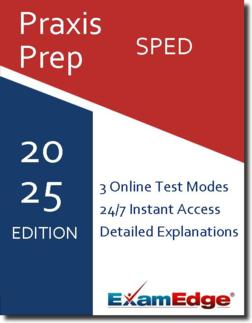Praxis Special Education (0351) Practice Tests & Test Prep by Exam Edge - Topics
Based on 32 Reviews
- Real Exam Simulation: Timed questions and matching content build comfort for your Praxis SPED test day.
- Instant, 24/7 Access: Web-based Praxis Special Education Knowledge-Based Core Principles practice exams with no software needed.
- Clear Explanations: Step-by-step answers and explanations for your Praxis exam to strengthen understanding.
- Boosted Confidence: Reduces anxiety and improves test-taking skills to ace your Praxis Special Education Knowledge-Based Core Principles (0351).

Understanding the exact breakdown of the Praxis Special Education Knowledge-Based Core Principles test will help you know what to expect and how to most effectively prepare. The Praxis Special Education Knowledge-Based Core Principles has multiple-choice questions The exam will be broken down into the sections below:
| Praxis Special Education Knowledge-Based Core Principles Exam Blueprint | ||
|---|---|---|
| Domain Name | % | Number of Questions |
| Understanding Exceptionalities | 25% | 15 |
| Legal and Societal Issues | 13% | 8 |
| Delivery of Services to Students with Disabilities | 62% | 37 |


